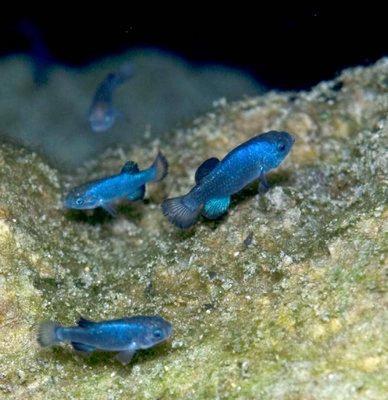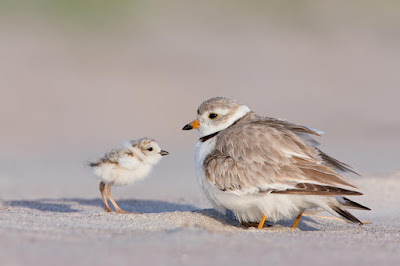Devil's Hole Pupfish: Small But Mighty
Janell Leung
 |
| https://66.media.tumblr.com/759268efec6aaed6ed1998da3fb2b025/tumblr_nd153ebUvC1ru6s4so1_400.jpg |
Description and Ecology of Organism
Known as the rarest fish in the world, the Devil’s Hole pupfish —or Cyprinodon diabolis — only naturally occurs in Death Valley National Park. Not only that, but the fish is endemic to a single spring — the Devil’s Hole — giving it the smallest known distribution and geographical range of any wild vertebrae. The Devil’s Hole is a water-filled cavern cut into the side of a hill with an unknown depth ("Swimming"). Located near the border between California and Nevada, the average water temperature ranges from 90 to 95 degrees Fahrenheit. In addition, Devil’s Hole contains near lethal levels of dissolved oxygen ("Devils Hole Pupfish"). However, despite the harsh environment, the Devil’s Hole pupfish’s ability to adapt to harsh environments has allowed it to survive.
 |
| https://static01.nyt.com/images/2008/08/23/us/23pupfish.map.gif |
Geographic and Population Changes
Being the only naturally occurring population of Devil’s Hole pupfish, the species does not appear anywhere else in the wild. And, while there have been attempts to establish refuge populations, most have been unsuccessful. Therefore, the current population holds great importance. Being an annual species, this population fluctuates throughout the year based on the availability of algae — their food source. This can range from approximately 120 fish in the winter to approximately 550 fish in the summer ("Devils Hole"). As a result, this species is particularly at risk for extinction. Not only does it fail to thrive in man-made habitats, but also it only occurs in one place. Any changes to the habitat have an effect on the whole species.
Listing Date and Type of Listing
In 1967, the Devil’s Hole pupfish was officially listed as an endangered species.
Main Threats to Its Continued Existence
The greatest threat facing the Devil’s Hole pupfish is ground water removal. One of the fundamental elements this species needs to thrive is a spawning and feeding shelf. As indicated in the image, this shallow rock shelf needs to be located near the surface, but still remain submerged.
 |
| https://www.researchgate.net/profile/James_Deacon3/publication/267564930/viewer//background/2.png |
However, if the water levels decrease, this spawning and feeding shelf is threatened to become exposed. This almost became a reality when a farming corporation bought land nearby. Their intent was to drill and pump groundwater, but the dramatic decrease in water during their first year of operation grabbed the attention of environmentalists. After some failed attempts to alter the habitat to allow for decreasing water levels, the issue was brought to court. Through Cappaert vs. U.S., a limit was placed on the amount of water people could pump, ensuring sufficient water levels ("Devils Hole"). However, there are also seemingly minor events that have had a large impact on the population. A recent example is an incident where three intoxicated men broke into, littered, and swam in the Devil’s Hole, resulting in the death of pupfish (Brean). This is one of many occasional habitat disturbances by humans.
 |
| https://www.kcet.org/sites/kl/files/atoms/article_atoms/www.kcet.org/arts/artbound/images/Devils_Hole_Death_Valley2.jpg |
Description of Recovery Plan
In 1990, the Recovery Plan for Endangered and Threatened Species of Ash Meadows, Nevada was established. The objective is to restore the six endangered and six threatened species, including the Devil’s Hole pupfish. While the Devil’s Hole pupfish will not be able to be de-listed, the goal is to reduce the listing to “threatened”. In order to do so, the plan is set to identify the habitats where ground water removal is critical and reestablish the communities that make up these habitats. This recovery plan also resulted in the creation of the Pupfish Task Force. Even though their name isn’t the most intimidating, the committee consists of people who are knowledgable on techniques and ways to prevent the extinction of pupfish. In addition, the initiation of a 5-year review was established in 2009, in which the Devil’s Hole pupfish’s current status was “endangered”. However, an updated review of their progress has yet to be released.
What Can You Do
With an unexplainable ability to adapt to harsh environments, there is still so much to learn from the Devil’s Hole pupfish; the species’ adaptations could provide insight in other fields, such as medicine, genetics, evolution, ecology, and biodiversity ("Swimming"). With this in mind, it would be extremely beneficial to keep the little guys around. One of the easiest ways to do so is to make a donation! Below is a link with easy instructions on how to donate, whether you are donating your time or some money.
Other Resources
Brean, Henry. "Researchers Hopeful Devils Hole Pupfish Will Survive Beer-fueled Invasion." Las Vegas Review-Journal. N.p., 03 June 2016. Web. 30 Nov. 2016. <http://www.reviewjournal.com/news/water-environment/researchers-hopeful-devils-hole-pupfish-will-survive-beer-fueled-invasion>.
"Devils Hole." National Parks Service. U.S. Department of the Interior, n.d. Web. 28 Nov. 2016. <https://www.nps.gov/deva/learn/nature/devils-hole.htm>.
"Devils Hole Pupfish." Nevada Fish & Wildlife Office. U.S. Fish and Wildlife Service, Nov. 2013. Web. 27 Nov. 2016. <https://www.fws.gov/nevada/protected_species/fish/species/dhp/dhp.html>.
"Swimming with the Fishes: Conserving the Devils Hole Pupfish." The Great Basin Institute. N.p., 27 July 2015. Web. 30 Nov. 2016. <https://www.thegreatbasininstitute.org/swimming-with-the-fishes-conserving-the-devils-hole-pupfish/>.






